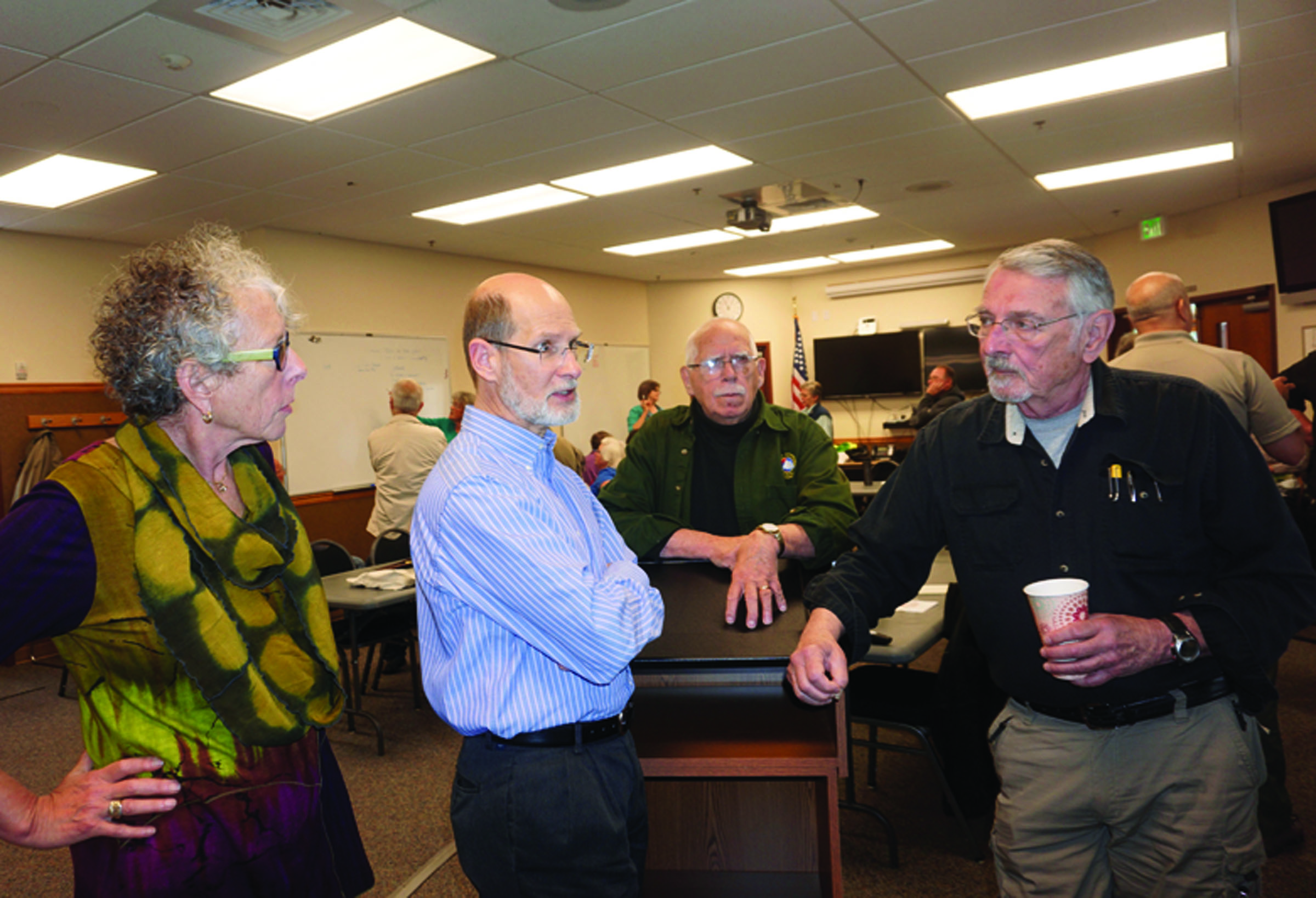PORT TOWNSEND — The Cascadia Rising disaster preparation exercise allowed participants to test their response systems while operating in an unrealistic context, said the director of Jefferson County Emergency Management.
“We did this in an accelerated format. This was not reality,” Bob Hamlin told 45 people at a debriefing session Friday.
“On the third day of the exercise, we weren’t doing what we would be doing the third day of the disaster.”
The session included representatives of police, fire, emergency, public health, and city and county agencies, as well as members of neighborhood groups.
Hamlin said there was a lot of “management by walking around” and that much of the activity involved “fairy dust and making things up.”
But there were several lessons learned, including the need to use face-to-face contact to disseminate needed information.
The regional exercise, held from June 7-10 throughout Washington state, Oregon and British Columbia, postulated a 9.0-magnitude earthquake from the Cascadia Subduction Zone off the Pacific coast, with a resultant tsunami and the effect of both on local infrastructure.
The 800-mile fault, which stretches from southern British Columbia to Northern California, spawns massive earthquakes an average of once every 200 to 500 years, with the last in about 1700.
Immediately following the onset of such a catastrophe, area residents most likely would have to look to themselves and their neighbors for help.
The expectation is that telephone lines and roads would be heavily damaged or completely destroyed.
In Port Townsend, a “tsunami river” would split the city along San Juan Avenue, with water blockage from the Boat Haven to North Beach, although the Mountain View Community Center would not be expected to sustain serious damage, Port Townsend Police Chief Michael Evans has said.
Bluffs between Chetzemoka Park and Fort Worden and above the Larry Scott Trail would wash away, causing serious property damage and loss of life, he said.
Jefferson County Undersheriff Joe Nole would expect some looting and unruly crowds and predicted that some people with guns would approach local merchants and offer protection for their property.
The Jefferson County Jail would be emptied of nonviolent inmates who were judged to not be a threat to society due to low food supplies and discipline issues.
The Hood Canal Bridge likely would be destroyed, Nole said, and several roads would be closed.
He envisioned a collapsing bluff on Highway 20 between Port Townsend and Discovery Bay and floods making U.S. Highway 101 impassable.
During a real disaster, the agency would “embed” a local professional news reporter who would volunteer to broadcast information about the event, Hamlin said.
The content of that person’s news reporting would be restricted.
“Everything that goes out will go through me,” Hamlin said.
“We have a list of rules as to what information goes on the air and what does not, and we won’t allow a reporter to broadcast what is happening in real time.”
After a briefing, Hamlin directed an exercise in which five small groups were tasked with solving a specific problem: where to house and hold an estimated 8,000 homeless people.
One group made a list of all the needs: water, food, shelter, medical support, sanitation, fuel, transportation and drainage.
That group found that there were few areas that could accommodate 8,000 people for six months.
They suggested that Chimacum’s H.J. Carroll Park was itself too small, but a housing center could use adjoining areas such as the Chimacum High School athletic field.
Hamlin, who designed the exercise, said he didn’t expect the groups to come up with any new solutions.
“We need people to stop dealing with onesies and twosies and deal with the situation globally and strategically,” he said of the small groups’ members.
“They won’t have to make decisions, that’s my job, but I want them to have some sensitivity as to why we make those decisions.”
In Clallam County, the sheer volume of data collected during the Cascadia Rising exercise will take several months to compile, but organizers already know an emphasis on communications needs to take priority, said Jamye Wisecup, Clallam County Emergency Management Department program coordinator.
Wisecup said the final version of the after action report won’t be available until autumn, although she said she hopes to have information available by August to share with the three Clallam County commissioners.
Anecdotally, however, exercise coordinators already know they need more amateur radio operators, Wisecup said.
The exercise focused on seven categories, Wisecup said: operational coordination, operational communications, critical transportation, public health and medical services, mass-care services, situational assessment and exercise design.
All seven categories have room for improvement, she said.
One takeaway was the way exercise participants in Forks, who performed the exercise for one of the four days, rose to the challenge, she said.
“Forks just shined” in this category, she said, because they resorted to the use of runners to carry messages.
“They did it the way you were supposed to do it. They get a gold star.”
________
Jefferson County Editor Charlie Bermant can be reached at 360-385-2335 or cbermant@peninsuladailynews.com.
Reporter Chris McDaniel contributed to this story.

